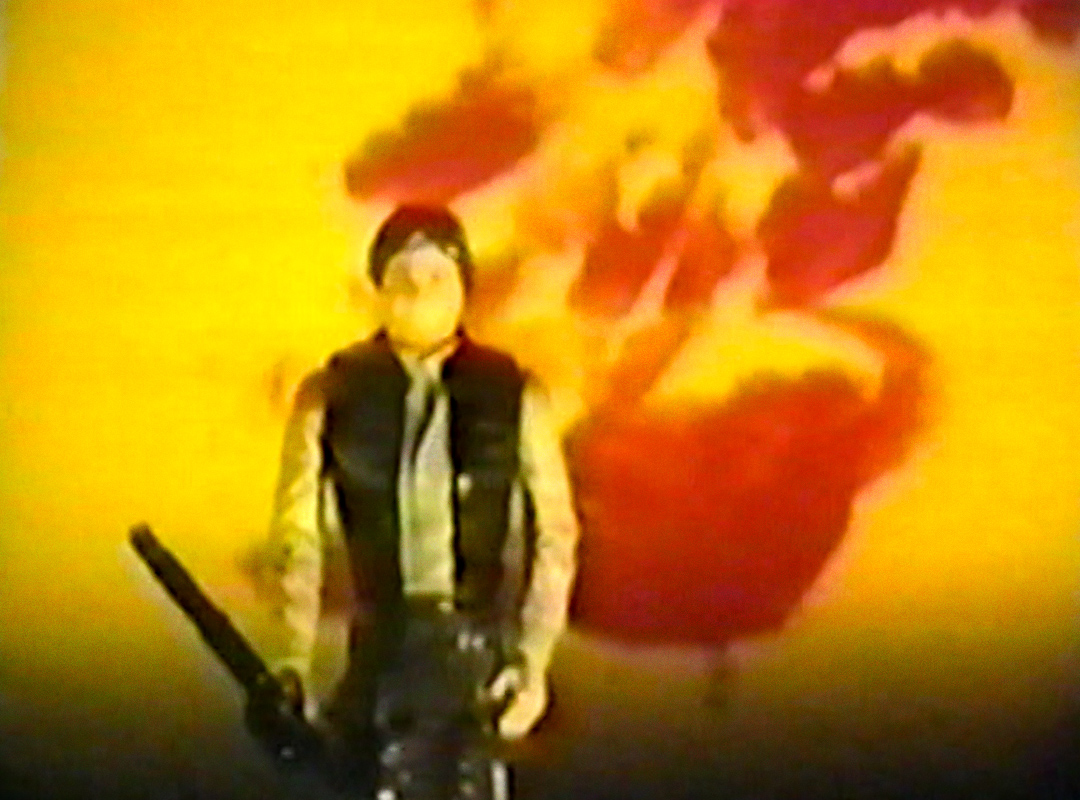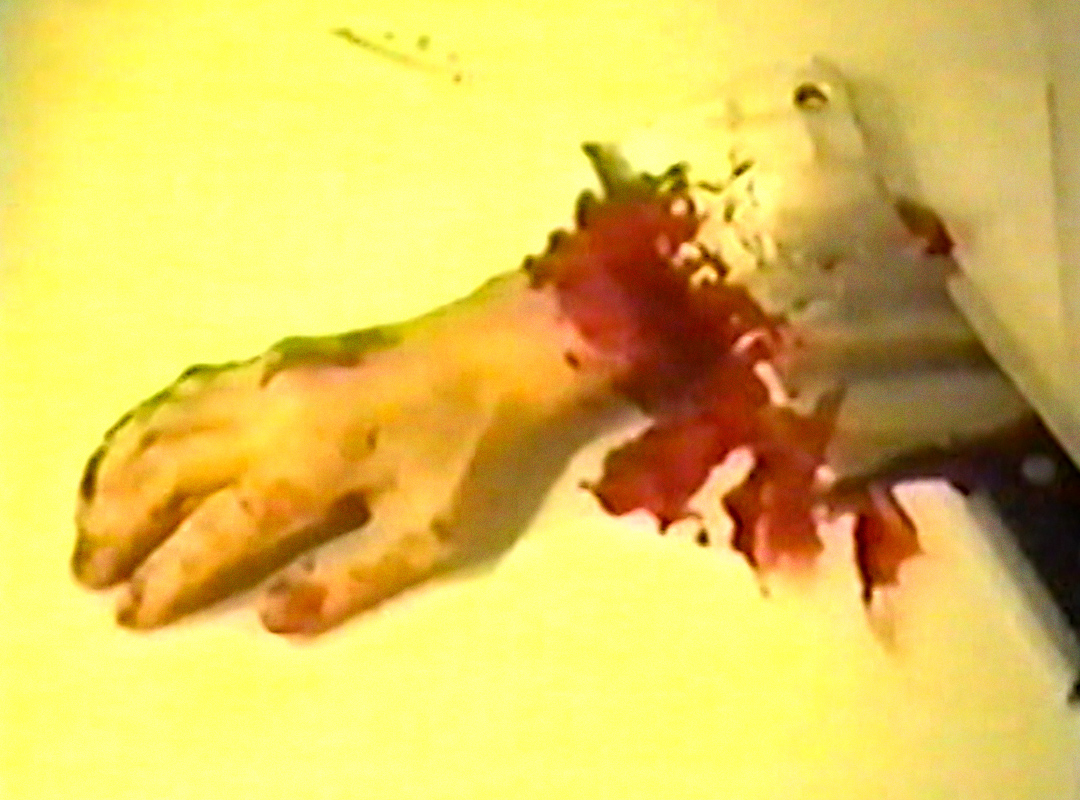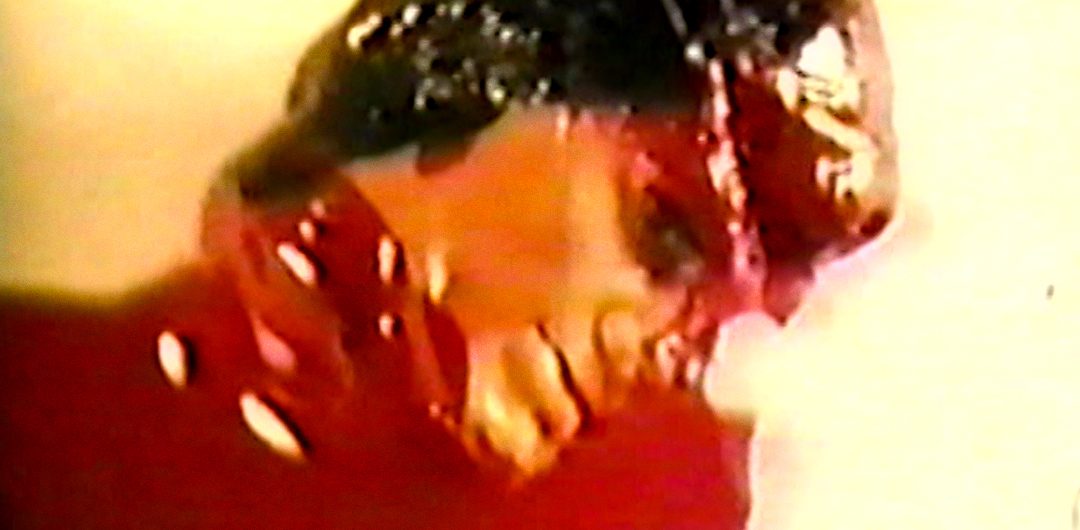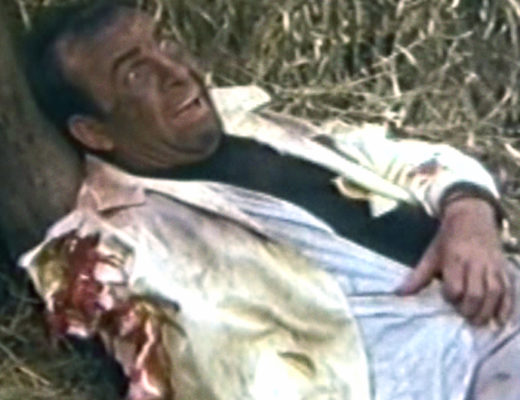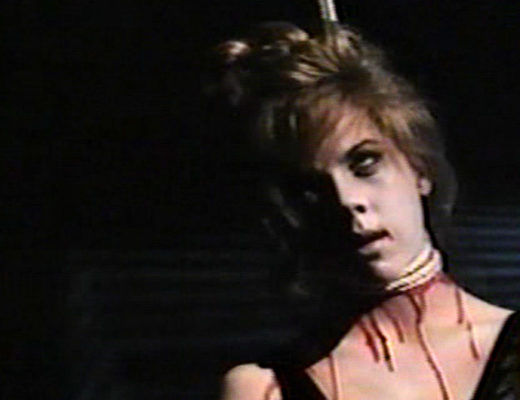This is an updated version of a review that was originally published in Bleeding Skull! A 1990s Trash-Horror Odyssey.
I haven’t seen every movie starring Han Solo and Luke Skywalker, but I’m pretty sure that this is the best one.
Das Buch Der Blutigen Geschichten (also known as The Bloody Curse and The Book of Bloody Tales) is a three-part anthology that was shot on Super 8 between 1987 and 1991 in Germany. The film channels The Evil Dead, H.P. Lovecraft, and the actual score from Hellraiser. These are all facts. But they’re not the most important facts. Movies like Day of the Reaper and They Don’t Cut the Grass Anymore were also shot on Super 8. The format was cheap and flexible. It allowed inexperienced filmmakers to experiment without heavy financial commitment. Unlike video, Super 8 suggested legitimacy. It was film. It was what Steven Spielberg used in Hollywood. By utilizing this format, filmmakers were one step closer to the dream of making real movies.
Now throw all of that out the window. Because a stop-motion, ultra-gore epic that stars Star Wars action figures instead of humans should never be compared to Steven Spielberg. That would be an insult to Das Buch Der Blutigen Geschichten.
Castle Gortswill is possessed. In “Chapter 1: The Bloody Curse,” we find out why. Kind of. Actually, all we know is that Han Solo drives his Toyota Celica to the castle. There, he meets another Han Solo and some other guy. So, yes. There are two Han Solos. Soon, a floating axe decapitates one of them. The remaining Han Solo inspects dismembered bodies, leaves the castle, comes back, has a dream involving a guillotine, confronts ghostly figures in black robes, and fights a giant monster hand. He says, “I have to get away!” but only succeeds in getting his face ripped off by a pair of floating scissors.
In “Chapter 2: Curse II: Night of Horror,” Luke Skywalker travels to Castle Gortswill because he heard that it was for sale. He wants to spend a few days there and see if the horrible rumors about the castle are true. Guess what? They’re true! Luke says, “It was not a dream!” and finds himself trapped in the haunted castle, where slime falls from the ceiling, blood covers the windows, and a monster wearing a karate uniform pukes green blood. Luke throws a sword into the monster’s face. The monster’s head melts. Satan appears as a giant bat creature. His head also melts.
Finally, in “Chapter 3: The Curse 3: Gortswill’s Curse,” the Imperial Commander from Star Wars arrives at Gortswill. He has been hired to blow up the castle because he is a demolitions expert. But before the deed can be done, zombies rise from their graves. The Imperial Commander has conversations with a groundskeeper, who says, “But there was someone!” Our hero confronts the zombies. Their bodies explode from the inside. Before the commander can triumph, a red, Godzilla-esque beast rises from the basement. And eats him.
The joy in watching this movie doesn’t derive from what it is, but what it stands for. This is an ambitious, meticulously crafted project that feels like Todd Haynes’s Superstar: The Karen Carpenter Story as directed by Herschell Gordon Lewis. All dialogue is communicated with intertitles. Bootleg orchestral music from various films plays constantly. And while this is obviously a homemade production, that fact never gets in the way. The edits, compositions, and attention to design (particularly the hand-drawn architecture) are all beautiful. This doesn’t feel like a teenager fooling around in a basement with their uncle’s Super 8 camera. Director Michael Kahlert knew what he was doing, as if he was in the midst of a creative explosion that didn’t cloud his judgment. Kahlert is like a miniature Stanley Kubrick, agonizing over every detail until his masterpiece is complete. Real sunsets magically appear. A pair of human hands eviscerate a mannequin head. Nothing is out of place.
Das Buch Der Blutigen Geschichten is a repetitive and circular movie. It’s also confusing. Conversations repeat, Matchbox cars get a lot of screen time, and the German intertitles don’t explain much. Most people will probably be bored out of their minds while watching. But for me, the sincerity of this self-contained universe overpowers everything. Boredom never enters the picture. The thrill of seeing these gory, pop-art visuals—combined with a sense of awe for Kahlert’s work ethic—leads to an inspiring and mesmerizing experience. I didn’t want it to end.
After completing this film, Kahlert remade Herschell Gordon Lewis’s The Gruesome Twosome. Also starring action figures.
